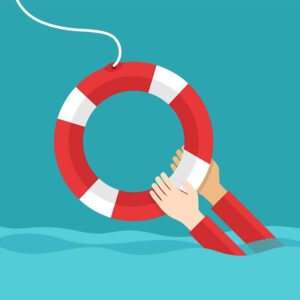By Eva Briggs, MD
Springs is here. The ice has melted. Soon it will be time for water-based recreation like swimming, boating and fishing.
More time in and around pools, lakes, rivers and streams means more risk of drowning, although it can occur at any time of the year. In the US about 18,000 people are hospitalized for drowning and about 4,000 die each year.
Among children, toddlers make up half of all cases of submersion.
 They’re naturally curious and their relatively large head size compared to adults means that they go headfirst into any water source, even a mop bucket. Yes, a toddler can drown in a bucket of water. Other at-risk groups include children of color and kids of low socioeconomic status who don’t learn to swim. Among adults, men are more likely to drown than women. Other risk factors include drug or alcohol use, elderly age and medical conditions such as seizures that lead to loss of consciousness.
They’re naturally curious and their relatively large head size compared to adults means that they go headfirst into any water source, even a mop bucket. Yes, a toddler can drown in a bucket of water. Other at-risk groups include children of color and kids of low socioeconomic status who don’t learn to swim. Among adults, men are more likely to drown than women. Other risk factors include drug or alcohol use, elderly age and medical conditions such as seizures that lead to loss of consciousness.
When a person is submersed in water, they naturally hold their breath. This leads to a rise in carbon dioxide and a fall in oxygen level. The victim eventually starts to hyperventilate and aspirates water into the lungs—wet drowning. Sometimes, especially in cold water, there is a spasm of the larynx preventing water from entering the lungs, oxygen level falls and brain cells die—dry drowning. Another mechanism of drowning is shallow water blackout. A person hyperventilates before entering the water in hopes that they can hold their breath longer to stay underwater longer. This lowers the carbon dioxide level. Their oxygen level falls and renders them unconscious before the carbon dioxide level rise enough to trigger the urge to breathe. Cold water immersion can also spark lethal heart rhythm abnormalities, due to sudden surges of both sympathetic and parasympathetic responses.
If you encounter a drowning person, remember to first keep yourself safe to avoid becoming a victim yourself. Call 911, or send someone to call. Get the patient out of the water, onto a firm flat surface and start CPR. If you haven’t been trained in how to rescue a drowning victim, don’t enter the water yourself. Instead, extend a pole or similar object or toss them a flotation device. Don’t do the Heimlich maneuver; it can cause the victim to aspirate more water. In case of a diving accident be aware that a spine injury is possible and use precautions to stabilize the spine.
Prevention is superior to treatment. Here are tips from the CDC on drowning prevention.
• Learn basic swimming and water safety skills. Children still require close supervision even if they are good swimmers. Remember to prioritize sun protection as well by wearing womens rashies and other sun protective clothes.
• Build fences that fully enclose pools. The fence should completely surround the pool AND separate it from the house, so that children can’t just dash out the back door and wind up in the water. This is one of the things you should consider when building a swimming pool. Then, I recommend you to also check out this pool servicing near me. The fence should have self-latching and self-closing gates. Remove toys that might lure a young child into the area. Consider an alarm that will sound if someone enters the water unsupervised.
• Supervise closely. A responsible adult should watch children near water, whether bathtub, pool, lake or creek. That means no looking at cell phones, no reading, no drinking alcohol and no recreational drugs. Drowning happens fast!
• Wear a personal flotation device. People of all ages and abilities should wear an approved PFD when boating or in other situations where an accidental fall into water might occur. Inflatable toys are NOT an adequate substitute.
• Learn CPR. Great general advice for everyone.
• Know the risks of natural waters. These include dangerous currents, rocks or other submerged objects, vegetation and limited visibility. Dams, waterfalls and swift water pose special risks. Educate yourself if you will be near these features. Be cognizant of weather so that you don’t become caught in an electrical storm or high winds while boating.

• Avoid alcohol and drugs. Wait until you are safely on dry land.
• Use the buddy system. Never swim alone, have a buddy and keep watch on each other.
• Take precautions for medical conditions and medications. A person with a seizure disorder should have one-on-one supervision for swimming and boating and consider showers rather than baths. Patients with autism and heart disease also have a high risk of drowning. Certain medicines can cause drowsiness, impaired coordination or impaired judgment.
• Don’t hyperventilate or hold your breath for a long time. This is a risk for shallow water blackout as described above.
Go out and enjoy the water, but remember to stay safe.

